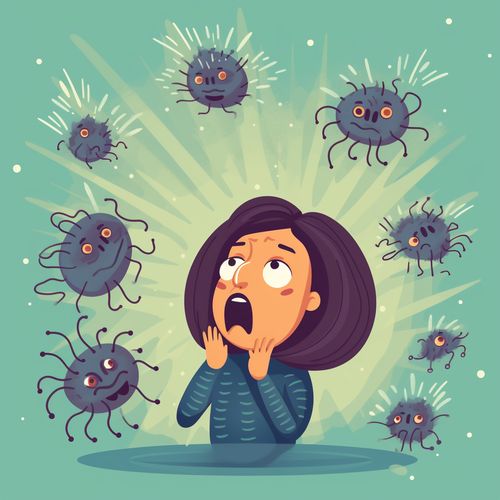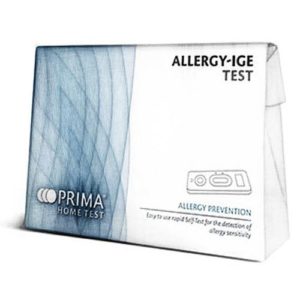House dust mites are very small creatures that are not visible with the naked eye. All homes have them and they eat the dead skin we shed. They are usually found in warm, moist spots that collect skin scales like carpets, pillows, mattresses, soft toys, clothing, soft furniture etc.
The mites are usually harmless but some people develop allergic symptoms to them. The symptoms are a result in inhaling allergens that are found in the waste of the mites. The waste is so tiny that they circulate in the air where they can be inhaled. Besides house dust mites, there are other allergens in the home that could trigger allergic symptoms such as cats, moulds, dogs, tree and grass pollen.
Why House Dust Mites Have to Be Managed?
The adverse allergic symptoms like eczema, rhinitis and asthma are treatable with medication but are not cured.
Minimising the number of dust mites is the best way to reduce the medication needed to control the allergic reactions.
How to Control to House Dust Mites in the Home – a Step-by-Step Guide
Did you have a blood test or a positive skin test to house dust mites? Do you think your symptoms might be a result of house dust mites? Below are a few tips you can use to minimise house dust mites. Try them and see if the allergic reactions are reduced.
Carry out the steps over the entire house for the best results. If this isn’t possible or practical, focus on the area where the person who has the allergic reactions spend most of their time like the sitting room or bedroom.
The first tips discussed are the easiest and least expensive, the later tips are more costly. Keep in mind that even though the number of mites might be reduced, the symptoms themselves might not stop altogether.
How many steps required to see results will vary from one person to another and it will take at least 2 months before you see any lasting results.

Step 1. Minimise Moisture in the Home
Home dust mites thrive in warm, moist conditions. Dampness increases mould growth, which can also result in more reactions that are allergic. Here are a few ways to reduce moisture:
- After cooking, bathing or washing, open windows or vents in bathrooms and kitchens. To prevent moisture spreading to other areas of the house, close these room doors.
- Try not to dry clothes inside the house, particularly in living rooms and bedrooms, with the exception of driers that are vented to the outside.
- In instances where you are drying clothes indoors, in the room where the damp clothes are drying, close the door and open the windows
- Prior to remaking beds, air bedding
- In the bedroom, open doors and vents
- Operate central heating at a few degrees below normal (particularly in the bedroom)
Step 2. Avoid Dust Build Up
If you suffer from allergies, minimising dust in the home is vital. To minimize the build-up of dust in the home:
- Minimise how many items collect dust, particularly the ones that are hard to clean like cabinets with ornamental displays, putting books in closed book cases and placing clothes and other items in drawers or cupboards.
- Use a damp cloth to clean surfaces/items that collect dust often. (Dry cloths do not collect all the dust and some of it will escape back into the atmosphere)
- Use a damp cloth to wipe off window blinds on a regular basis
- Clean curtains, soft furniture, carpets/floors with a vacuum. Change the vacuum bag or air filter often.
- Vacuum mattresses twice a month.
Step 3. Launder at High Temperature
Dust mites are killed in fabrics when the temperature is over 60°C:
- Make sure your pillowcases, sheets and duvet covers can withstand a 60°C washing and clean them twice a month
- Apply the above method to curtains and also wash them regularly at 60°C
Step 4. Bedding and Soft Toys
House dust mites thrive in pillows and mattresses where there is an abundance of skin scales. Minimise the number of dust mites in these areas and to do this:
- Change pillows twice a year (unless they have special covers)
- Use natural materials for blankets and duvets
- Use micro-porous covers on mattresses, pillows and duvets in the bedroom of the sufferer
- Every time the bedding is cleaned, these micro covers should be wiped clean using a damp cloth.
- Allergy suffers should avoid stuffed soft toys because house dust mites thrive in these areas Avoid putting stuffed toys on the bed. Place these toys in the freezer for 6 hours at least once a month to kill the dust mites.
Step 5. Carpets
Dust mites also thrive in carpets. Changing carpets can be costly, but if you will be changing the carpet anyhow. Here are a few tips to minimise the number of dust mites:
- Instead of carpets, use vinyl or linoleum flooring or natural sealed flooring like tiles, cork or wood. The new floors should be free of cracks that might allow dust to build up.
- Go with synthetic carpets that have very short piles since they hold fewer mites compared to wool carpets with long piles
- Choose cotton rugs that can withstand regular washings at 60°C
Step 6. Vacuum Cleaners with High Efficiency Filters
Some vacuum cleaners are very efficient, so:
- Consider purchasing a vacuum cleaner with an HEF and vacuum carpets, floors, soft furniture and soft toys frequently.
- Also, consider using attachments to your vacuum to get in tight areas and real tight spots that dust may fall into. Finally, be sure to replace filters and vacuum bags often to ensure that your vacuum runs optimally.
Following these simple steps all but ensures that most of the dust in your home can be effectively reduced and your indoor air quality improved. Not only will it make your home a better and cleaner environment to breathe, but it will also have immense health benefits for all those who suffer from allergenic and respiratory problems.
Step 7. Replace Furnishings
The following points should be considered while purchasing new furniture:
- Replace couches and chairs with fabric weaves to furniture with canvas, rattan, leather, or leather-like fabrics that can easily be cleaned and won’t harbor dust mites.
- Get the high-end mattress with a hypoallergenic cover to reduce the amount of dust mites in your bedroom. If possible, select a mattress made out of natural latex, wool, or cotton. Synthetic materials tend to trap more heat and moisture, hence creating an ideal local climate for dust mites.
- Choose curtains or blinds in washable materials with cotton or polyester fabric since they are easy to clean. Avoid heavy drapes or velvet curtains, or those made of other textured fabrics since they represent ideal surfaces for the collection of dust and other allergens.
- Installing the air purifier in places where one spends time the most, usually the bedroom and the main living area, can deliberately contribute to creating a big difference. Air purifiers remove particles and allergens from the air to give an easy passage of breathing for one who suffers from allergies.
- Finally, clean and dust your new furniture regularly in order to help keep dust and allergens outside. Vacuuming once a week, cleaning with a damp cloth, and regularly washing bedding and curtains can help remove the greatest proportion of dust mites. It only takes a little more care to turn your home into an allergy-friendly space, comfortable and inviting for everyone.
Step 8. Use Essential Oils and Natural Repellents
Essential oils can be an effective, fragrant way to repel dust mites, and some organic repellents are also available.
- Use eucalyptus oil by adding a few drops into a spray bottle with water and lightly spritzing the mixture around your mattress, pillows, and upholstered furniture. Eucalyptus has an element in it that helps in keeping dust mites away.
- Use tea tree oil: This oil has antimicrobial properties that can help kill dust mites. Add a few drops into your laundry when you’re washing bedding, or mix with water for a spray.
- Lavender oil: This stuff smells nice, but it might also help keep the dust mites at bay. It works both in a diffuser and with a few drops added to your vacuum bag.
- Diatomaceous earth: This natural, fine powder can be sprinkled on carpets and mattresses. It’s harmless to humans but helps to dehydrate and kill dust mites.
- Baking soda: Sprinkle baking soda liberally on carpets and upholstery, let it rest for a couple of hours, and then vacuum. It aids in absorbing moisture and odors, which the dust mites thrive on.
Always check a new product on a small area for irritation or damage to fabrics. While these natural methods are helpful, they should be combined with other dust mite control measures.
Additional Potential Actions
Other tools to reduce dust mites include dehumidifiers, air filters, ionisers and mechanical ventilation devices that recover heat. Although these tools might minimize allergic reactions, their effectiveness has not been fully proven.
Home Allergy Test Kits
Allergies can make you feel bad and can even limit what you can do. Sneezing, itching, and trouble breathing can all be symptoms of allergies. Luckily, there are ways to find out what you are allergic to and how to manage it. One way is by using a home allergy test kit. These kits can help you figure out what might be bothering you, whether it’s certain foods or things in the environment. Using a kit is easy – you just take the test and read the results. Knowing what you’re allergic to can be a big relief and help you feel better. If you have symptoms like a rash, redness, or sneezing a lot, it might be a good idea to try a kit like the Prima Home Allergy Test Kit or one that is specifically for cats or airborne allergens. For more information, you can also read our Allergy Testing FAQs.
Main Photo: Anthony Cunningham for Zoom Health
Inset Photo Credit: “House dust mite” (CC BY-SA 2.0) by Gilles San Martin
Zoom Health is a leading UK supplier of Home Health Tests and Earplugs
This post was originally published in November 2017. It was last update in July 2024.






